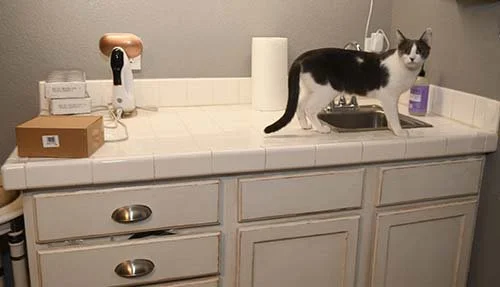
Our Mission
To reduce how many kittens are needlessly euthanized.
Our Vision
To ensure the lives of cats and kittens are not only given a chance but are placed in the loving homes who will provide for them.
Our story
CCKC started in the summer of 2020, as a regular foster home. We discovered that one shelter can euthanize upwards of 85 kittens or puppies in one day who have a treatable disease, such as ringworm. We were truly shocked, and it prompted us to take on as many kittens as we physically could. Since then, we have put a lot of effort in researching for the best, fastest, and safest way to treat them.
Unfortunately, local shelters and rescues are understaffed and underfunded, and COVID made these problems worse. The energy and resources it takes to help sick, infected or broken kittens are more than what most rescues or shelters can handle. In some cases, the adoption fee doesn't even cover the vet bills to help these babies. This is where we step in.
The Core Values of CCKC of Lacey:
FOCUSED. We have a dual purpose, to serve young kittens & expecting queens as well as the organizations who supports them.
PROGRESSIVE. We provide high quality, innovative care and we value forward-thinking approaches to the welfare of kittens and expecting queens.
POSITIVE. We deliver a hopeful message because we truly believe that our approach is making a difference.
COLLABORATIVE. We support our internal team and external partners in their efforts to advance the welfare of kittens and expecting queens.
IMPACTFUL. We approach the problem at an individual and community level to make a significant difference for kittens and expecting queens.
How do we do it?
In a less than a year, we have had over 200 kittens under our care. The average critical intake is 1 to 4 at a time. Occasionally, during an emergency, we end up with 8 or more.
Our desire is to be able to take them all, but we are limited in capacity because we only have one brooder that can handle up to 5 neonates or 3 kittens, if isolation is needed.
We also use brooders for kittens with panleukemia, because it can control the internal environment, which helps stabilize the occupant. Kittens with URI or pneumonia are also put in there for nebulization.
The rooms in our home are divided depending on the disease, the severity, and compatibility of the kittens. Whenever we have a severely ill kitten, that requires attention around the clock, our schedule has to change: feeding every two hours, making sure they’re warmed, and stimulating them as their mom would.
On a daily basis, the day is ordered around feeding, giving meds, washing towels, playing with the kittens, cleaning litter boxes.
Educating the public
Through our presence in social media, we not only try to educate the public on the situation, we also try to empower more people to foster sick kittens.
For more information on fostering and managing sick kittens, visit the resources page and follow us in social media.









